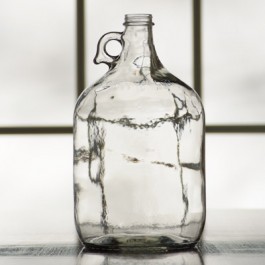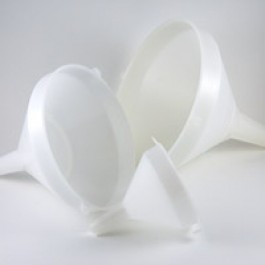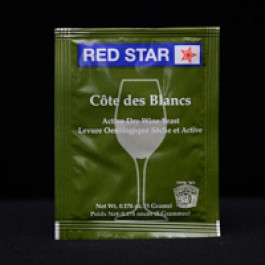Home Winemaking Classes
Since 1979, home wine and beer making have been a tradition for us here at Fulkerson Winery. We are delighted to offer classes in beginning home winemaking to assist in familiarizing you with the process of making your very own homemade wines.
Classes offered:
2pm Saturdays, Sept. & Oct.
Home Winemaking Juices
Fulkerson proudly presses and offers over 30 different varieties of grape juice for home winemaking. Shop our 100% whole grape juices, available fresh during September and October. Our home winemaking supplies make producing your own wine a simple and enjoyable experience!
Fulkerson’s Home Wine Making Equipment & Brewing Supplies
Making wine at home can be made better with Fulkerson’s home wine making supplies. We have everything you need to produce your next outstanding wine in our extensive assortment of home winery equipment. Get inspired by our selection of tools that will make it easy for you to bottle your next brew. Make your own delectable wines right now and shop now!
Carboys & Containers

Equipment & Supplies

Additives & Chemicals

Bulk/Packaged Yeast

Winemaking & Brewing Guides
Whether you’re looking to make wine or beer, we’re here to guide you every step of the way.
Winemaking Process
Procedure To Follow
- Sterilize all equipment: 2 tsp. Potassium meta-bisulfite per gallon of warm water as a sterilizing solution is sufficient for most applications. Sterilize all equipment including carboys and anything that will touch wine or juice. Rinse with clean water. Tap water is fine, however avoid using any water treated with Chlorine, as this may cause a spoilage characteristic called 2,4,6-Trichloroanisole (TCA) or ‘Cork Taint’
- Bring juice up to room temperature for primary fermentation by allowing to sit in ambient temperatures overnight. White wines typically ferment between – 60˚F-70˚F, and Red wines between – 70˚F-80˚F. This can be yeast specific, along with style choice.
- Start a yeast culture by adding 4tsp of the malt sugar (Yeast Starter) to approximately 1c of warm water or warm juice and add your yeast packet, let sit approximately ½ hour to ¾ hour in order to rehydrate and ‘proof’ similar to the process used for breadmaking.
- Adjust acid and sugar per recommendations on website, and add other ingredients to juice.
- Add Yeast Nutrient at the rate of 1tsp/gallon to your juice (Crushed Fruit has a different rate, which is listed on bottle).
- Add Pectic Enzyme per recommendations on bottle.
- Add required sugar to achieve desired potential alcohol level by following chart on pg 13. Sugar used in chart is “DEXTROSE” corn sugar. Using table sugar (sucrose) will require less but be harder to dissolve. Multiply numbers in table by [(dextrose)(.92)] to obtain #’s of sucrose per gallon.
- Siphon approximately ½- gallon of juice into sterilized 1 gallon container to allow for ample headspace for fermentation in both containers. (Approx. 4.5 gallons should remain in carboy). This will decrease the chance for a ‘blow over’ event caused by excessive foaming.
- Add 4/5 of yeast culture (which has been proofing) to carboy, add the rest to the gallon jug. Alternatively, yeast may be added directly from packet into carboys, however results may vary. Proofing is recommended.
- Fill your airlocks half full (or to fill line) with water, insert them into a rubber stopper prior to placing them on your carboy and gallon jug. Insert into grommeted lid on buckets.
- Ferment red wines for 1-2 weeks in a pail with skins (do not ferment skins in glass carboys) punching (stirring) skins into the wine once or twice daily depending on desired tannin level (the more you punch the skins down, the more tannin will be extracted. Once the skins stop floating/raising to the surface of the wine, fermentation is complete and you may press wine off skins by scooping skins out of the bucket and pressing with cheese cloth or by hand. (typically 4-6 days or when they fall into solution). Then continue to follow directions for white wines.
- Ferment white wines and reds without skins (rosés) for 1-4 weeks until a clear line of sediment forms at bottom of container, and the wine clears.
After Primary Fermentation is Coomplete
- When you see a clear line of sediment and the airlock has slowed down, or has stopped, it’s time to rack your wine leaving the sediment behind. Rack off wine into a sterilized carboy using your racking cane, and siphon tubing. Racking is done by siphoning clear wine off of sediment. Discard sediment: clean dirty carboy immediately, or it may be hard to clean later.
- Top off carboy by racking wine in the gallon jug back into your carboy and store any extra in refrigerator for future topping-off of your carboy. (If there is not enough wine to top off your carboy, there is usually enough CO2 in solution to protect it from spoilage.).
- Warm wine up to 70-75°F and add Bacchus Malo Lactic Bacteria, let ferment until sediment layer forms. If secondary fermentation is not desired, skip this step.
- Rack off wine into a sterilized carboy
- Add 1/4 tsp. potassium meta-bisulfite to carboy.
- Place airlock back on carboy.
- Age until a clear line of sediment has settled to the bottom, this is usually between 1-2 months. During this time, keep an eye on the water level in your fermentation lock to be sure it does not all evaporate.
- Rack wine into a sterilized carboy – Add ¼ tsp. Potassium meta-bisulfite to carboy for oxidation prevention. Meta-bisulfite also kills bacteria that may cause spoilage.
- Age until a clear line of sediment has settled to the bottom. (Between 1-2 months) (keep an eye on the water level in your fermentation lock. If fermentation locks are allowed to evaporate, or are empty, oxygen can get into your container allowing for oxidation of your wine.)
After Secondary Fermentation and Ageing
- Cold stabilize your wine to take out Potassium Bi-Tartrate (cream of tartar) crystals that form by cooling the wine down to 29-32 degrees for two weeks or more. (Easiest way to do this is to bury your carboy in about a foot of snow for 2-3 weeks. Mark it well with a flag. You will see potassium bi- tartrate (cream of tartar) crystals form and fall to the bottom of your carboy.
- Rack wine while it’s still cold to prevent crystals from re-dissolving, leaving the crystals behind.
- Add an additional ¼ tsp. potassium meta-bisulfite to prevent spoilage and oxidation. A total of ½ tsp. should be added during the process. Once after primary (or if performing Malo-lactic fermentation, after that process) and once after Cold-Stabilization.
- ***IF SWEETENING, or if sugar is present after fermentation (residual sugar or “RS”), adding potassium sorbate, or sterile filtering with .5 micron or less filter pads after racking is required. *(For home wine makers using filters, filtering may not be a guarantee to stop a re-fermentation, sorbate is still recommended after sterile filtering) Bottle 24-48 hours after the addition of sugar and sorbate to allow live yeast to die. When adding Sorbate, potassium meta-bisulfite addition is required to prevent a Malo-Lactic bacteria from fermenting sorbic acid (a biproduct of sorbate addition), which can cause ‘geranium taint’ which is not reversable/treatable and is quite undesirable.
Brewing Process
Prepare equipment
- Sterilize all equipment using 1 tsp. potassium meta-bisulfite per gallon of warm water. Rinse twice with clean water.
Steep Grain
- In 3 gallons of water, slowly bring specialty grains (according to your specific recipe) up to 160°F and then remove from heat for 10 minutes.
- Remove grain (if in bag, do not squeeze).
- Make first addition of fermentable (DME/LME/SUGAR/etc).
- Bring contents (now called Wort [wort rhymes with hurt]) to a boil. Contents may foam, so be prepared to turn off heat if it boils over.
- Add “Bettering Hops” according to recipe and boil for 45 minutes.
- Add any “Flavoring Hops” in a steeping bag.
- Add rest of DME/LME per your individual recipe and stir for a minimum of one full minute.
- Boil for 15 minutes.
- Add any “Aroma Hops” per the recipe in a steeping bag and turn off the burner (your wort should now have been boiling for approximately one hour).
Cool your wort
- Pour 2 gallons of cold distilled or filtered water into your sterile carboy or fermentation container.
- Carefully remove the hop steeping bags.
- If you have an Immersion Wort Chiller or Heat Exchanger you may use one of these to cool your wort as quickly as possible following manufacturer instructions; if you do not own one of these, skip this step.
- Carefully pour your hot wort into your fermenter (fill to the 5 gallon level with more water) and place into a bath of ice water to cool it as quickly as possible. The wort must be below 85°F in order to add yeast or you run the risk of killing them.
- Monitor your chilling progress with a sterile thermometer, once the temperature is below 85°F, you may take a sample of wort with a sterile wine/beer thief and check the Specific Gravity with a sterile hydrometer. Record your results and discard (or drink) your sample (record any tasting notes).
- Pitch your desired yeast by sprinkling it on the surface of the wort or by making a yeast culture with a little “Yeast Starter”.
- Place a water-filled fermentation lock on your fermenter.
Monitor fermentation
- Lag phase (aka cell build-up) by yeast may last a couple of hours to a few days, so do not worry if nothing happens for 24-48 hours.
- Your beer will start to “bubble” and foam for around 3 days to a week (depending on how vigorous your fermentation is, it may “foam over”, so always ferment in an easy to clean area).
- Once fermentation slows, you will not notice bubbling anymore and your beer will begin to clear.
- After around 10-20 days (longer for lagers and higher gravity beers) your beer will be “finished”.
- Carefully check the specific gravity with a sterile hydrometer and record your results. By subtracting this number (“Final Gravity” or “FG”) from the “OG” you recorded before fermentation, you will get the approximate “Strength” or alcohol level of your beer. Use the formula: OG___- FG___ / .0075 = ___% Approx. alcohol by volume. Discard or taste sample and record any tasting notes.
Carbonate your beer
- Add Priming sugar (about one cup of granulated or corn sugar per 5 gallons of beer) and bottle.
- Keg and force carbonate.
- Sanitize all of your equipment using 1 tsp. potassium meta-bisulfite per gallon of warm water. Rinse twice with clean water.
- Boil your priming sugar in in 2 cups of water and place in the bottom of a sterile bottling bucket.
- Transfer your clear beer from the “lees” with sterile siphon equipment into the bottling bucket, leaving behind the sediment. (Discard sediment and clean fermentation container)
- Stir well to mix in the sugar.
- Clean and sterilize 50 new or used beer bottles (NOT THE SCREW CAP KIND).
- Begin bottling by slowly filling each bottle (make sure fill levels are consistent). It is best to use a bottle filler as it is designed to stop when you lift it off the bottom of the bottle.
- Cap each bottle with NEW clean and sterile crimp style beer cap.
Bottle your beer
Age your beer
- Put your beer in a dark place around 70°F (light will degrade the beer).
- After approximately 2 weeks, put your beer in a cooler place or cold storage (aka the fridge) for longer storage.
- Drink (Beer is the best between 3-12 weeks after bottling. Stronger beers may be best after 12-20 weeks in the bottle. Lagers are best if not bottled until at least 4 weeks after brewing and usually need to sit for another 4-6 weeks in the bottle until they reach their peak).
